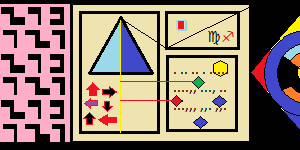Indole is required which can prove difficult for some to acquire. I have no recommendations on where to obtain it, it is up to you where you get it. 1-naphthoyl chloride is also required and can be purchased at a few places online, or otherwise made from 1-naphthoic acid via thionyl chloride or phosphorus pentachloride. I will not be going into detail about the synthesis of the acid chloride, info is available elsewhere for those seeking this method. Since this synthesis utilizes a Grignard reaction anhydrous Et2O is needed, and for this reaction it cannot be replaced with THF, it gives a minuscule yield. Relatively high purity magnesium chips/turnings/powder should be used, and activated with dilute HCl or AcOH followed by rinsing with dry MeOH and drying. Ethyl bromide can be easily made via ethanol/NaBr/H2SO4. Of course all the reagents used must be as dry as possible. About the ether, I have once used ether made from ethanol and sulfuric acid, and after initial purification and then standing for one week over KOH, after distillation it performed wonderfully. So that shows anh. Ether can be made at home and used with success in a grignard.
On to equipment, this is most conveniently carried out in a 3-neck RBF of 250ml capacity, thermometer adaptor, addition funnel (pressure equalized is best), good condenser, and stirring is a must. You need a CaCl2 drying tube, can use a distillation takeoff though after sealing the vac adaptor. Having a Buchner funnel and vac source is always good to expedite enhancementing.
Magnesium MW: 24.3
1-bromoethane MW: 109
Indole MW: 117.1
1-naphthoyl chloride MW: 190.6
3-(1-naphthoyl)indole MW: 271.3
SYNTHESIS:
To magnesium chips ( 0.6g, 24.6mmol) wetted with ~2ml Et2O, was added a solution of EtBr ( 2.6g, 24.6mmol) in 25ml Et2O. At first only a few ml of this solution is added via the addition funnel. The flask was warmed by hand to initiate the reaction. No iodine or other measures were taken to ensure initiation, activation of the Mg was enough on all occasions. Once the reaction has begun, the rest of the EtBr/Et2O was added at such a rate to sustain reflux. After addition is complete, the solution is refluxed for 1 hour to ensure complete conversion. There is a small amount of Mg in the bottom of the flask.
The flask is cooled to -5 degrees C, and drop wise keeping temp under 0 degrees C, is added a solution of Indole (2.9g, 24.6mmol) in 25ml Et2O. The mixture gets cloudy, and eventually it is green, and 2 phase. On one occasion the 2 phases disappeared. After the addition of indole, the solution is allowed to reach RT and stirred for one hour.
After this time, the flask is once again cooled to -5C, and with fast stirring (fast as possible without splashing of the reaction mixture) is added a solution of 1-naphthoyl chloride (4.9g, 25.7mmol) in 25ml Et2O drop wise (temp under 0C!). As soon as the first drop touches the mixture it turns yellow, and then becomes orange/red with the deposit of a red gum. If stirring is not efficient the stir bar will become trapped in the gum. After addition, let reach RT and stir for one hour.
Then there is added 20-30ml of saturated ammonium chloride (aq.) and stirred for 15 minutes. The formed precipitate is crushed in the flask and best attempts are made to remove it from flask walls etc. The ppt is enhancemented and washed with copious amounts of dH2O and triturated in 100ml acetone/dH2O 1:1. Sucked dry, dried completely in air with radiant heat from a hotplate. Yield 3.5g (counting on indole 52%)
Average yield of 3-(1-naphthoyl)indole was 3.5g-4.5g, or roughly 50-60% yield. Single spot TLC. Further product can surely be recovered from the filtrates and such, but it smells strongly of indole and attempts were simply not made.
This compound is best recrystallized from aq acetone, but it is not necessary. It is a yellowish-pink powder with a weak smell of indole.



